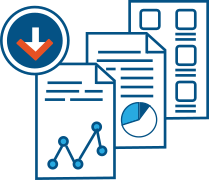Spend Under Management (SUM) is a federal acquisition initiative that measures the extent to which government agencies are strategically managing their procurement dollars through established, compliant, and efficient contract vehicles. The goal of SUM is to promote smarter buying by reducing duplication, increasing use of Best-in-Class (BIC) contracts, and improving the overall value of federal spending.
Introduced by the Office of Management and Budget (OMB) and implemented across federal agencies by the Category Management Leadership Council (CMLC), SUM is a core metric used to assess an agency’s maturity in category management and procurement efficiency. It plays a significant role in driving how agencies plan, award, and track contracts.
Purpose and Strategic Goals
The primary purpose of Spend Under Management is to ensure that taxpayer dollars are spent effectively by maximizing use of contracts that are strategically sourced, performance-managed, and vetted for compliance and pricing. SUM supports federal category management goals by encouraging agencies to consolidate spending, reduce administrative burden, and make data-driven contracting decisions.
Strategic objectives of the SUM initiative include:
- Shifting federal procurement away from uncoordinated and duplicative contracts
- Promoting use of governmentwide and agencywide contract vehicles, especially Best-in-Class (BIC) contracts
- Increasing small business participation and equitable access to strategic sourcing opportunities
- Driving cost savings, efficiency, and standardization across common goods and services
- Providing leadership with metrics to evaluate procurement performance and guide acquisition strategies
SUM supports broader goals of transparency, performance optimization, and acquisition reform while fostering collaboration across agencies and vendors.
SUM Tiers Explained
The SUM framework organizes procurement actions into tiers that represent different levels of strategic contract management. The higher the tier, the more strategically managed the spend is considered. These tiers help agencies assess where their procurement dollars are going and how they can shift more spending into higher-value, vetted contract vehicles.
The four SUM tiers are defined as follows:
- Tier 0 – Unmanaged Spend: Purchases that are made without any strategic oversight, often on an ad hoc or one-off basis. These include open market buys that are not linked to approved vehicles.
- Tier 1 – Managed Spend: Spend that is tracked and governed at the agency level but not through multi-agency vehicles. It includes agency-specific contracts that are planned and coordinated internally.
- Tier 2 – Governmentwide Solutions: Spending through contracts that meet five of the ten Category Management maturity attributes (e.g., pricing transparency, data tracking). These may include multi-agency vehicles that are not yet designated as Best-in-Class.
- Tier 3 – Best-in-Class (BIC) Solutions: The highest level of SUM. These contracts meet rigorous standards in terms of transparency, usage, data reporting, small business inclusion, and performance management. BIC vehicles are endorsed by OMB and include contracts like GSA MAS, OASIS+, and NASA SEWP.
Agencies are encouraged to move spend progressively from Tier 0 and Tier 1 into Tier 2 and Tier 3 vehicles to improve acquisition outcomes and achieve greater efficiencies.
Agency Responsibilities and Measurement
Agencies are evaluated annually on how much of their total eligible spend is categorized under each SUM tier. These metrics are reported to the Office of Federal Procurement Policy (OFPP) and integrated into agency scorecards under the President’s Management Agenda.
To align with SUM goals, agencies must:
- Develop and implement Category Management strategies that align procurement planning with SUM targets
- Identify opportunities to shift spending to Tier 2 and Tier 3 vehicles, such as BIC contracts and GWACs
- Train acquisition personnel on category management principles and SUM reporting tools
- Use dashboards and data tools provided by GSA and OMB to track SUM progress
- Collaborate with contract owners and vendors to ensure that requirements are met under SUM-designated vehicles
- Incorporate SUM considerations into acquisition planning, market research, and contract award decisions
Agencies are expected to meet annual SUM targets and demonstrate year-over-year improvement in strategic spend alignment.
Benefits of SUM for Contractors
While SUM is primarily a government-side metric, it has direct implications for contractors who wish to compete for federal business—particularly those participating in or pursuing positions on Tier 2 and Tier 3 contracts.
Benefits of understanding and aligning with SUM for contractors include:
- Increased visibility and opportunity through BIC and high-tier contract vehicles favored by agencies
- Stronger competitive positioning for RFQs and task orders issued under SUM-aligned contracts
- Better alignment with agency acquisition strategies, improving the likelihood of long-term relationships
- Insight into agency buying patterns through category management dashboards and SUM reports
- Opportunities to participate in governmentwide initiatives like GSA MAS, 8(a) STARS, OASIS+, and Polaris
Contractors who hold or pursue BIC-designated contracts can market their status as a key differentiator and align business development strategies with agency SUM goals.
Conclusion
Spend Under Management (SUM) is a cornerstone of the federal government’s effort to optimize procurement, eliminate waste, and improve acquisition outcomes. It guides agencies toward smarter use of strategic contracts and creates a performance framework for evaluating procurement efficiency. For vendors, understanding SUM and aligning with high-tier contract vehicles—especially Best-in-Class solutions—opens the door to increased visibility, more targeted opportunities, and long-term success in the federal marketplace. As agencies continue to focus on strategic sourcing, SUM will remain a defining metric for how government dollars are spent.


